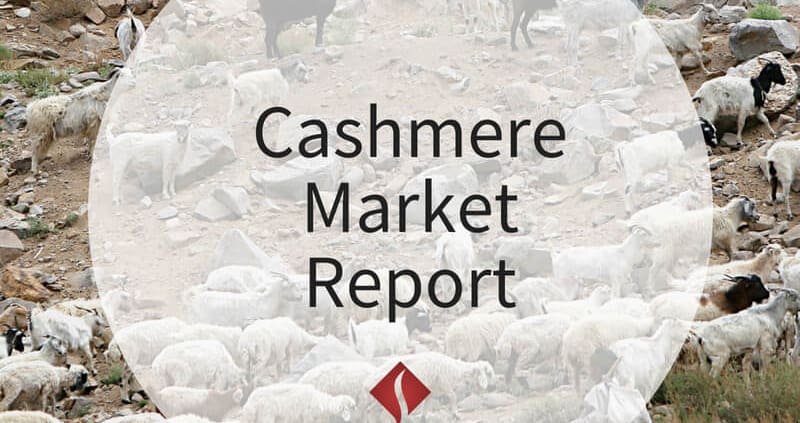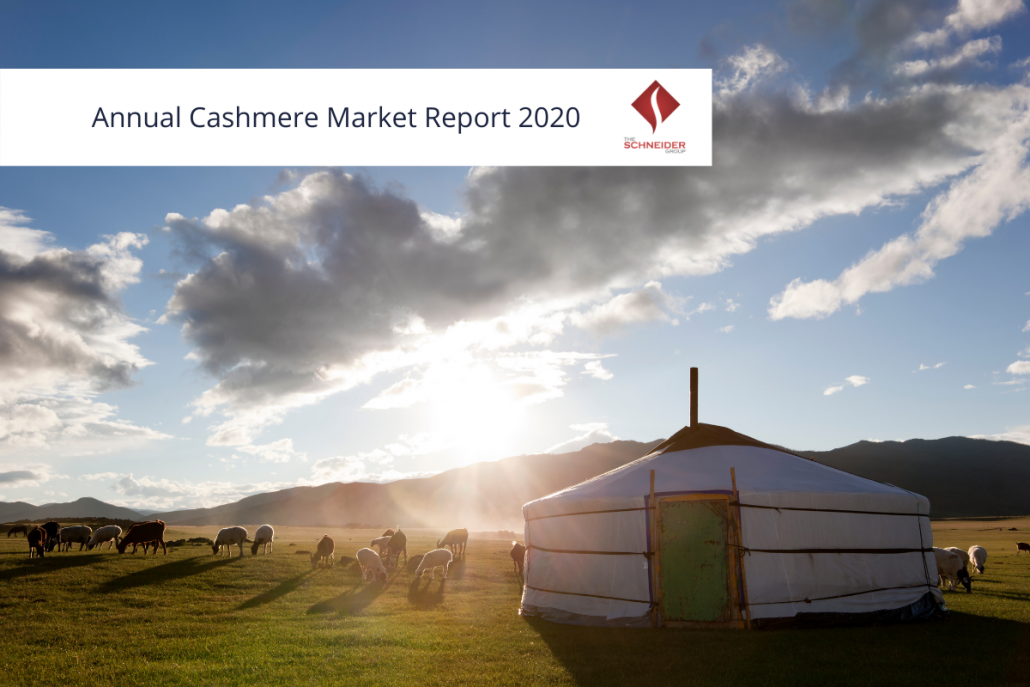ANNUAL CASHMERE MARKET REPORT 2020
CHINA
2019 had already been a tough year for the cashmere industry around the world. From the middle of February 2020, some dehairing mills were starting to receive some orders, but with the spread of COVID-19 and the subsequent worldwide lockdown, all these orders were cancelled. In April, the price for cashmere decreased by around 15% compared to January. The production had been similar to 2019, but the mills have been forced to stay closed until the beginning of June, initially due to the pandemic and afterward due to the complete lack of cashmere demand.
In China, the market only increased slightly at the beginning of March after Chinese New Year, when top makers started producing the orders booked in November and December 2019. However, as the pandemic continued to spread across the world starting from mid-March, the market fell sharply. Luckily, China has been able to reduce losses caused by the virus, as the mills could receive bank loans and a tax break. The government promoted policies that encouraged consumption after the lockdown was over at the end of March, trying to support the local market.
As cashmere collecting started in April and May, the Chinese market strengthened for only a time period of two weeks. Cashmere export came to a halt as the pandemic led to a complete shutdown in many key consumer markets, in particular the US market.
In June and July, most of the top makers had to stop their machinery. This shutdown caused issues for Spinning companies who had to keep their machines running to pay their workers. The price for cashmere yarns reduced by around 18% compared to the period before Chinese New Year.
As the pandemic got more and more under control in China some spinners received processing orders from abroad e.g. from India. The cashmere yarns business rebounded in July and August, but mainly for Mongolian cashmere.
Thanks for the Double 11 selling, the domestic market turned a little better from September to October. The price of cashmere went up slightly by around 5%.
All in all, the cashmere production in 2020 decreased by around 3-5% less compared to 2019. The price of Cashmere fell by around 15% during the short period after the pandemic started to spread in March. From July to December, the price increased by around 10-15%.
MONGOLIA
Mongolia has implemented “Cashmere Program” (2018-2021), the purpose of this program is to increase cashmere production in Mongolia by 60% and increase the production of environmentally friendly end products to the foreign market, increase the export of this products on the International Market.
Mongolian government is giving low interest loans to the cashmere industries 188.2 billion MNT in 2017, 107.3 billion in 2019 with 12%-14% interest rate per year, another 300 billion MNT loans in 2020 with 3%-8% interest rate per year. Asian Development Banks “Agricultural and Rural Development Project” provided 3.89 billion MNT to 3 enterprises and 8.2 bill. MNT to 2 enterprises with 7% of interest per annum. Despite these efforts the pandemic has put the whole country and cashmere industry in great difficulty.
Due to political election in Mongolia in 2020, the Government tried to maintain high prices for the raw cashmere, but the real consumers market in China and Europe was not responsive enough.
Due to pandemic, Mongolian tourism industry from abroad was completely blocked affecting a lot the cashmere garments’ sale. The most of the orders of big brands were cancelled.
Mongolian borders were closed from end of January 2020 until now, nobody could have travel. Mongolian and Chinese traders were missing. The shipments of scoured and dehaired cashmere from Mongolia to China have been delayed for more then 30-60 days and even more. All these factors have contributed to a price reduction then previous 2019.The prices of raw cashmere had dropped by 25%-30% also during economic crises of 2009 and 2015. In 2020 instead, the prices of raw cashmere has fallen by 40%-50% compared to 2019.
Mongolia accounts for 40% of the world production. In 2020, dehaired cashmere export reached only 215 tons compared to 392 tons in 2019, meaning 45% less than 2019. The most of the cashmere was washed in Mongolia and then exported to China. The main markets for dehaired cashmere such as Italy, Great Britain, Germany had a very slow market demand due to the pandemic.
According to Mongolian Statistical office the livestock in Mongolia is continuing to increase, arriving at 30 million goats (from total of 70 million animals), the total production of cashmere arrived at 10.000-12.000 million kg of greasy. In June 2021, will be election in Mongolia and the Government has promised another 200 billion MNT at 3% interest loans to the industries and will try to maintain the prices at high level as possible…. Let’s see what happens.
IRAN
For Iranian cashmere, the year 2020 started with an inherited lower cashmere price from around $95 in the middle of 2019, down to $75-80 in January 2020. With these low prices, it seemed already that the world economy was moving towards a recession in 2020.
Then came the pandemic and like almost everything else, the cashmere market, not only faced a free fall of price, but it also faced a severe lack in demand.
On the other hand, the greasy traders in Iran expected a sharp increase in price due to very high local inflation and continuously descending local money value. This expectation was becoming true for almost any product except for greasy cashmere, which had no demand. A few big traders of cashmere were soon forced to sell their stock at prices much lower than their purchasing price. A famous Afghan trader who had bought at $18/kg at one point, sold the same at $10 in a few months’ time spans.
In January 2020, the price of Iranian cashmere was around $75-80. In November of the same year, the price was around 45-50. A drop of around 40% not mentioning the demand which was almost none. The price of greasy cashmere during the same time dropped from $12 in January to $8 in November, almost the same percentage drop. However, prices suddenly increased in December due to large-scale purchases by Chinese traders and their Afghan/Pakistani and Iranian agents who collected cashmere for export to China.
Now and then some rumours about the prohibition of the export of raw cashmere from Iran or prohibition of import into China of raw natural fibres cooled down the market but whenever traders found ways to tackle the problem, again prices increased.
Due to the purchases by the Chinese, the year closed at around $11 which was a 30% increase compared to the month before.
Regarding the quality and quantity of Iranian greasy cashmere in 2020, it must be said that the quality was better than previous years but quantity as always is unknown because there are no official statistics. A wise estimation indicates that the quantity is only around 1,000 tons out of which half is economically fit for processing and the other half is tannery with a short length and low yield. The tannery is the result of the slaughter of the goats for the meat rather than keeping them for milk and the cashmere.

 The Schneider Group
The Schneider Group
 The Schneider Group
The Schneider Group The Schneider Group
The Schneider Group
Leave a Reply
Want to join the discussion?Feel free to contribute!